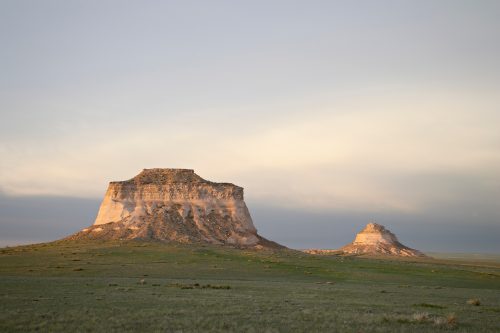Defending Colorado’s Pawnee National Grassland from Fossil Fuel Development
10th of Jun 2024

Advocates for the West filed a lawsuit against the Bureau of Land Management (BLM) for failing to protect shortgrass prairie in Colorado’s Pawnee National Grassland from continued oil and gas extraction. We’re representing the Center for Biological Diversity in the case.
“Pawnee National Grassland is increasingly known not for its incredible bird watching, stargazing, and solitude, but for dust, noise, and industrial activity associated with drilling and fracking,” said Sarah Stellberg, Staff Attorney at Advocates for the West. “Even worse, BLM erroneously claims to lack authority to require even basic environmental safeguards to prevent air and water pollution, harm to bird and wildlife populations, and negative impacts to the public’s enjoyment of this special place.”
“The BLM doesn’t just have the authority to address the multiple threats that federal fossil fuel extraction has on the Pawnee National Grassland, it’s legally required to protect this biologically diverse area,” said Alli Henderson, Southern Rockies Director at the Center. “These grasslands are a treasure in Colorado, home to burrowing owls and swift foxes, and they support more than 300 unique bird species. The agency should step up to safeguard the harms that are putting this unique and special habitat in the crosshairs of fossil fuel extraction.”
“The BLM has a real chance to be part of the solution when it comes to cleaning up ozone pollution on the Front Range,” said Henderson. “Instead of throwing its hands in the air, the agency needs to implement measures to protect the air quality that people and wildlife depend on and safeguard our dark and starry skies.”
Background
The Pawnee National Grassland is located in northern Colorado, and oil and gas extraction in and around the area contributes to ozone pollution in the state’s Front Range, which has been a nonattainment area for the pollutant since 2004. A nonattainment area is classified by having exceeded the pollution limit for one or more pollutants, including ozone. Ozone, the key ingredient of smog, is a poisonous gas. Drilling and fracking are major sources of ozone-forming emissions.
At Issue
The case challenges the BLM’s authorization of drilling permits in and around the federally managed grassland. In issuing the permits, the BLM said it lacked authority to consider harms to wildlife, air and water, dark skies, or the aesthetic of the grassland because the federal minerals would be extracted by horizontal fracking from wells built on private or state lands. As the wells would not technically be on public lands, the BLM states that they have no authority or responsibility to assess harms.

